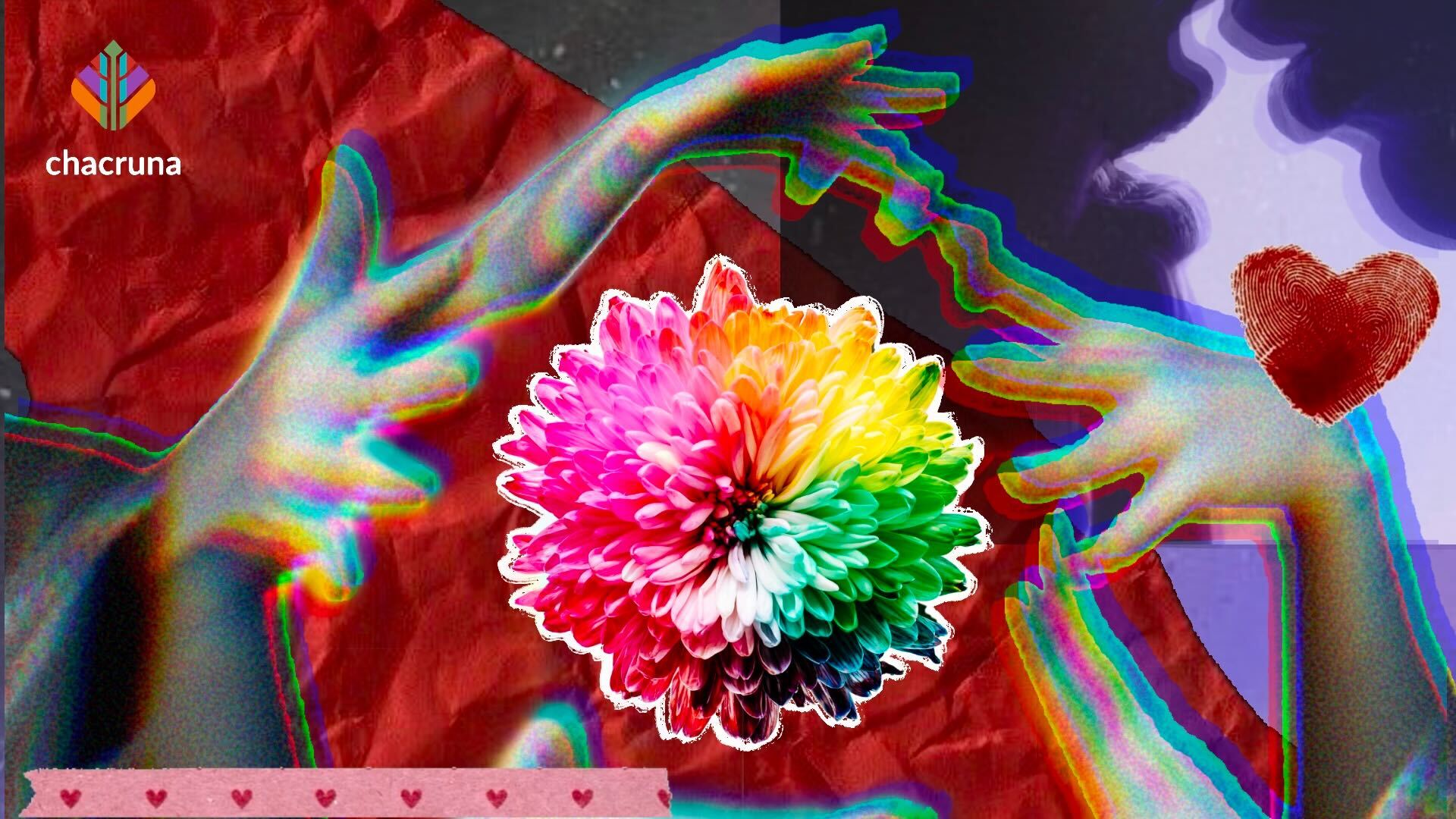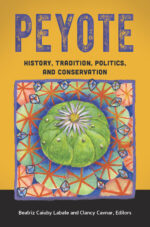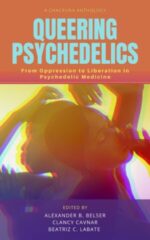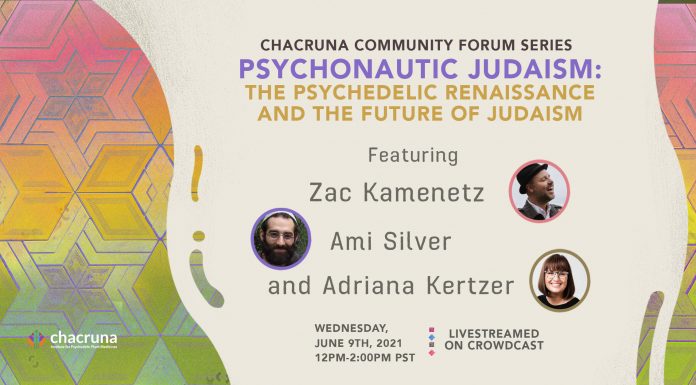- The Future of Sex and Psychedelics: An Agenda for Research - April 24, 2025
- L’avenir des recherches sur le sexe et les psychédéliques - April 24, 2025
- Women, Mental Illness and Psychedelic Therapy in Postwar France - October 25, 2023
- The Future of Sex and Psychedelics: An Agenda for Research - April 24, 2025
- L’avenir des recherches sur le sexe et les psychédéliques - April 24, 2025
- Acid and Orgasms: Why LSD Failed to Sexually Liberate Women - October 7, 2020
In a recent article, published in Medical Humanities, “Sex and psychedelics: a wide-lens look at a burgeoning field,” we critically examine the intersection of psychedelics and sexuality, arguing for a broader and more contextually informed approach to this emerging area of study. We wanted to emphasize the importance of integrating cultural, historical, and socio-political factors into the analysis of psychedelics and their effects on human sexuality, challenging the prevailing focus on individualistic frameworks that dominate current research and focus on measurable, mechanistic change to prescribed notions of “sexual function” and “sexual well-being,” despite the contested history of these diagnostic concepts. While the field has seen significant growth in interest over the past five years, much of the existing literature often isolates participants’ sexuality from broader structural contexts, politics, and cultural frameworks, reducing the reported improvement to sex to a matter of personal optimization and pleasure.
While the field has seen significant growth in interest over the past five years, much of the existing literature often isolates participants’ sexuality from broader structural contexts, politics, and cultural frameworks, reducing the reported improvement to sex to a matter of personal optimization and pleasure.
Recent studies have highlighted the potential of psychedelics to positively influence sexual function and well-being. We have chosen to examine three of them. For instance, Barba et al. (2024) conducted a comprehensive mixed-methods study, drawing from two datasets drawn from participants who used “classic” psychedelics in both naturalistic and clinical environments. Their findings gesture towards some consistent improvements in aspects of sexual function, including pleasure, satisfaction, arousal, communication, and body image, particularly amongst male participants. These effects were substantiated with quantitative measures like the Flourishing Scale, which showed statistically significant increases over time. In another study, Holka-Pokorska (2023) systematically reviewed nearly a hundred clinical trials involving MDMA, documenting enhancements in sexual responsiveness, intimacy, and overall performance. A third small scale qualitative by Jacobs et al. (2022) explored the use of microdosing in couples’ therapy, with participants reporting increased confidence, openness, and satisfaction in their relationships. These findings collectively suggest that psychedelics hold therapeutic potential for addressing sexual dysfunction and enhancing intimacy.
Yet, we show that such studies, while consistently demonstrating a clear positive relationship between psychedelics and sexuality, nonetheless become less convincing because they divorce sexuality from its social, historical, and cultural contexts. This framing of sexuality is emblematic of a broader neoliberal discourse, where sexuality is reduced to a mechanistic, individual pursuit of optimization and self-improvement, in which an enhancement of sexual interaction and pleasure becomes an almost entrepreneurial endeavour. In this view, psychedelics become tools for enhancing personal well-being, divorced from the structural factors that shape experiences of intimacy and desire. Such a perspective shores up the GOOPification of sexual well-being. Far from contributing to a broader project of sexual liberation, the use of psychedelics instead risks reinforcing feelings of failure or inadequacy among individuals who do not experience the promised benefits, perpetuating the idea that sexual satisfaction is solely a matter of personal effort and choice.
We are particularly critical of how the concept of sexual well-being is defined and operationalized in much of the existing literature. Pleasure is often conflated with satisfaction, with little attention paid to the broader determinants of sexual health. For example, studies like Barba et al.’s fail to consider external pressures such as economic insecurity or workplace stress, which may significantly influence sexual experiences. By focusing narrowly on individual outcomes, these studies obscure the ways in which systemic inequalities intersect with personal narratives of intimacy and desire. While the use of psychedelics may provide short-term relief from, or support to overcome, certain sexual problems, it cannot be a miracle cure for the structural conditions of turbulence and precarity that mark many people’s lives, and that no doubt play a role in shaping our contemporary sexual culture: if you need to hold down several jobs to pay the rent and you’re exhausted, it’s hard to argue that taking a psychedelic will make any long term demonstrable difference to your sexual well-being and function, or improve the gendered and racialized conditions that shape the forms of labour people undertake. What negotiations will a person have to put in place to convince a partner already disinclined to care about his or her sexual pleasure to take psychedelics in order to improve their sexual relationship? And how can psychedelics reduce the “orgasm gap” in heterosexual couples, now well described in the scientific literature? We also advocate for a more intersectional approach in these studies, that accounts for the interplay of gender, class, race, and cultural background in shaping the effects of psychedelics on sexuality. As we indicate, the vast majority of participants in studies to date are white, educated, and from a well-off social class. A more diverse and representative sample, which includes a much bigger Black, Indigenous, and non-white population and greater sexual and class diversity is likely to yield very different results.
We show for instance how women have historically faced heightened scrutiny and moral judgment regarding their use of psychedelics, and even now often draw on discourses of justification their consumption within therapeutic or spiritual frameworks only. Female recreational or experiential use remains largely taboo among women themselves. During the countercultural movements of the 1960s, psychedelics were celebrated as tools for liberation, but this rhetoric masked deeply entrenched gendered power dynamics. Women were frequently pressured to participate in psychedelic sexual practices that prioritized male pleasure, reinforcing rather than challenging patriarchal norms. Contemporary research appears to continue to reflect these dynamics, with studies reporting less pronounced positive effects for women compared to men, and especially prominent in partner reporting. We suggest that these disparities may stem from the ways in which societal expectations and gendered stereotypes influence both the experiences of participants and the interpretations of researchers.
Ethics around sex in psychedelic spaces, too, emerge as a critical concern in our analysis. Psychedelics are known to amplify emotional sensitivity and suggestibility, raising complex questions about consent and power in therapeutic contexts. The concept of “pharmacosuggestibility” highlights the heightened vulnerability of individuals under the influence of psychedelics to external cues and authority figures. Historically, sexual reactions in psychedelic therapeutic spaces—now avoided in contemporary discourse—were acknowledged and addressed by practitioners. Early psychedelic therapists were trained to recognize and manage such responses, understanding them as a natural and sometimes therapeutic aspect of the altered states induced by LSD. These therapists sometimes developed specific strategies to navigate these situations, aiming to maintain ethical boundaries while allowing space for patients to process and explore these experiences within the therapeutic context. Others used unethical practices, where therapists exploited patients’ altered states for personal or sexual gain, abuses that too commonly continue to this day. Yet, we argue that current clinical guidelines often sidestep discussions of sexual responses, perhaps out of a desire to legitimize the field and distance it from its countercultural past. This omission, we warn, leaves significant gaps in the training of therapists and the protection of patients. Thus, we support the need for ethical guidelines that explicitly address the potential for sexual responses in therapy, rather than avoiding the topic altogether, or treat it only from the point of view of the aggressor therapist, as we show through the analysis of three recent manuals on psychedelic-assisted psychotherapy.
Future research should show greater engagement with marginalized communities, such as LGBTQ+ individuals and sex workers, whose perspectives have been historically excluded from mainstream discussions of psychedelics and sexuality. These groups offer valuable insights into the ethical and political dimensions of intimacy, particularly in relation to power dynamics, consent, and agency. We also think that research should be more interdisciplinary in their approaches, drawing more from sociology, anthropology, and history to situate psychedelic experiences within their broader social and cultural contexts.
By emphasizing the importance of historical, social, and cultural context, we challenge the field to move beyond its current preoccupations with optimization and self-improvement.
Ultimately, we show how existing research is limited, often reducing complex social phenomena to individualized problems amenable to pharmacological solutions. By emphasizing the importance of historical, social, and cultural context, we challenge the field to move beyond its current preoccupations with optimization and self-improvement. Instead, we envision a more nuanced and inclusive approach, one that recognizes the diversity of human experiences and the structural political forces that shape them. This article serves as both a critique of the present state of research and a call to action for scholars, clinicians, and policymakers. By addressing the gaps and blind spots in the study of psychedelics and sexuality, it lays the groundwork for a richer and more equitable understanding of how these substances intersect with human intimacy.
Note: Dubus and Dymock’s guest-curated exhibition, “Higher Love: The Psychedelic Roots of Modern Sexuality,” opened on March 28th at the Museum of Sex in New York City. Learn more here.
Note: Read the French version of this article here.
Art by Fernanda Cervantes.
References
Barba, Tommaso, Hannes Kettner, Caterina Radu, Joseph M. Peill, Leor Roseman, David J. Nutt, David Erritzoe, Robin Carhart-Harris, and Bruna Giribaldi. “Psychedelics and Sexual Functioning: A Mixed-Methods Study.” Scientific Reports 14, no. 1 (February 7, 2024): 2181. https://doi.org/10.1038/s41598-023-49817-4.
Dymock, Alex, and Zoe Dubus. “Sex and Psychedelics: A Wide-Lens Look at a Burgeoning Field.” Medical Humanities, January 6, 2025. https://doi.org/10.1136/medhum-2024-013068.
Holka-Pokorska, Justyna. “Can Research on Entactogens Contribute to a Deeper Understanding of Human Sexuality?” Pharmacological Reports 75, no. 6 (December 1, 2023): 1381–97. https://doi.org/10.1007/s43440-023-00552-7.
Jacobs, Lucy, Samantha Banbury, and Joanne Lusher. “Micro-Dosing Psychedelics as a Plausible Adjunct to Psychosexual and Couple’s Therapy: A Qualitative Insight.” Sexual and Relationship Therapy 39, no. 3 (2022): 791–804. https://doi.org/10.1080/14681994.2022.2044466.
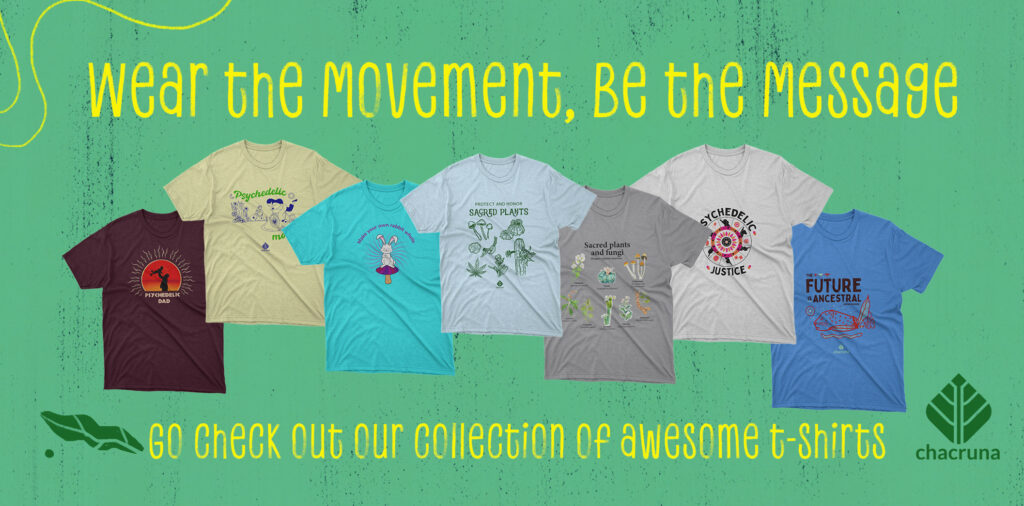
Shop our Collection of Psychedelic T-Shirts
Take a minute to browse our stock:
Did you enjoy reading this article?
Please support Chacruna's work by donating to us. We are an independent organization and we offer free education and advocacy for psychedelic plant medicines. We are a team of dedicated volunteers!
Can you help Chacruna advance cultural understanding around these substances?


